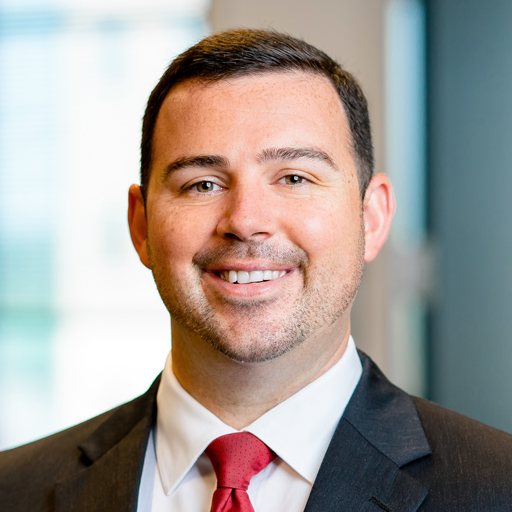
Disruption and uncertainty have defined the healthcare landscape over the past several years, with healthcare leaders across the nation seeking answers on how to keep their organizations relevant and viable. As 2019 came to an end, healthcare leaders projected 2020 to be a year for stabilization after the rapid growth and political uncertainty of the previous few years.
Clearly, the 2020 healthcare landscape did not live up to that expectation. The pandemic and its disruptive effects undoubtedly will leave an enduring mark on the healthcare sector, while also spurring significant changes in healthcare delivery.
To develop a more complete outlook heading into 2021, ECG surveyed more than 80 C-suite leaders in late 2020 to understand their key areas of focus and what to expect for healthcare this year. Below are six themes that emerged from our conversations. Perhaps unsurprisingly, each has some direct linkage to the pandemic.
1. COVID-19
COVID-19 continues to be the leading concern for provider organizations, with nearly every C-suite leader’s priorities having been affected by the pandemic in some way. While some organizations navigated the challenges that stemmed from the public health emergency better than others, hospital leaders acknowledged the business of healthcare is forever changed as a result of the pandemic.
For most C-suite leaders, dealing with COVID-19 remains at the forefront of their 2021 agenda, and nearly all believe it will remain so at least until summer or fall. Further, these leaders believe the impacts of the pandemic will have a lasting impact on day-to-day operations, though most also acknowledge their operational and care delivery model has become more efficient and consumer- and patient-centric as a result of changes made in 2020—be it the adoption of digital health solutions that improve patient access; implementation of care standards and care management protocols that foster flatter, nimbler operations; and many others.
Returning to prepandemic clinical care service volumes is the area of greatest concern cited by many C-suite leaders, followed closely by the expectation that patients may be sicker and more complex, having foregone diagnosis or treatment for disease in 2020. Emergency department volumes are not expected to return to prior peaks, with patients having found alternative sources of care for nonemergent cases. Surgical caseloads in ASCs have mostly regained prepandemic activity levels, and some have grown, as migration of certain cases from the hospital has accelerated.
At the time of our calls, most leaders were in the midst of a second COVID-19 surge and concerned about potential new strains, and all were awaiting or just receiving their initial round of vaccines. Nearly all cite the vaccine rollout as the most critical milestone event of 2021. Reluctance by some healthcare workers to get the vaccine is frustrating to many.
2. Acceleration of Strategy
The pandemic prompted the delay of many 2020 business and capital plans. This forced some health systems that were locked into a historical hospital-centric business and fee-for-service (FFS)–oriented model to rethink what healthcare would look like in the future and how to best prepare. Others that were focused on a steady path—albeit for many a slow path—to transforming their organizations to accept greater levels of financial risk doubled down on their strategy (see next section).
C-suite leaders continue to be concerned about the market disrupters (both innovative niche companies and large-scale disrupters such as Optum and Amazon) that present increasingly formidable threats to the traditional hospital business model and continue to chip away at core services. In response, many health systems are pursuing strategic partnerships to build alternative sources of revenue and gain expertise in areas such as retail health, digital health, and medical device innovation.
A key observation from our conversations is that while systems remain committed to growth and building scale, they are balancing that strategy with new vigor around hospital portfolio rationalization and system integration—a clear recognition that scale without performance is fleeting. Understanding that they cannot be all things to all people, many health systems and hospitals are looking to shed weak and underperforming assets and clinical services while prioritizing, stabilizing, and protecting profitable segments of their current business.
Partially spurred by the pandemic, executives we spoke with recognize the need to be more adaptive and agile in the future, thinking through the lens of a health system and ambulatory footprint rather than the traditional brick-and-mortar hospital perspective. Additionally, COVID-19 created a bias toward implementation, and leaders state that strategy development will be more focused on quicker assessments and planning, with an emphasis on speed to market. Health systems will continue to explore ways to keep people out of the hospital, while simultaneously expanding their geographic footprint to improve patient reach and access points. The most common tactics highlighted for investment in 2021 are as follows:
-
- Primary care (including retail health).
- Ambulatory strategies (including ASC, cancer center, and ancillary center laboratory and imaging).
- Service line strategy and clinical services distribution.
- Physician alignment and integration.
- Institutional clinical partnerships.
- Digital health (including telehealth, remote monitoring, and consumer engagement and access).
3. Reinvigorated Desire to Pursue Value Strategies
While prior efforts to shift toward value met with limited success due to differing views of risk sharing between payers and providers, and with risk- or performance-based payments still being insufficient to drive meaningful change, C-suite leaders also acknowledge that their reliance on commercial rates with continued downward pressure isn’t sustainable. Several developments in the market have spurred leaders to reevaluate potential value strategies:
-
- Competition continues to intensify, with health plans—which many C-suite leaders say have generally been slow and unsupportive of providers shifting to downside risk—increasingly vertically integrating with medical groups.
- Health plans are aggressively resisting giving year-over-year unit price increases to traditional health system and medical group providers.
- New market entrants and disruptors that are introducing niche, innovative care models are threatening to siphon off profitable segments of current business models.
- New price transparency regulations will further enable consumerism trends and demands, with customers seeking lower-cost alternatives.
All of these factors have set the stage for new value strategies in the future. Core to these strategies will be a renewed health system focus on diversifying revenue sources to mitigate reliance on FFS payment models. Health systems will also prioritize initiatives to gain true cost savings and operational efficiencies to better compete with new market entrants. These strategies will include investments in new joint ventures and strategic pricing by service line to preserve market share and better compete for commoditized services.
4. Optimized Physician Enterprise
2020 was the most challenging year for health system and hospital financial performance in a decade or more, with cash flow severely reduced and most providers experiencing negative operating margins, at least until CARES Act funding brought some measure of stability. Every aspect of a health system’s strategic, operational, and financial model was exposed; many systems that invested significant year-over-year support for physician enterprise organizations or have carried expensive contracts with hospital-based physician services are now looking for ways to get more value from these relationships, or simply restructure them to reduce costs.
Leaders we spoke with stated that current physician enterprise models are too costly, and with their unstainable historical compensation rates, more performance risk is needed in physician contracts. Some are asking the tough questions: how big does my employed physician network really need to be? Are there alternative models to employment? Do we need to own it, or can we partner with organizations that share our values and business objectives?
Many C-suite leaders see FFS payments only as a short-term strategy and believe their hospitals and health systems must evolve within the next decade so that risk payments become the predominant source of revenue. To that end, they acknowledge that the shift to risk will require forming and utilizing an aligned provider base (e.g., employed medical group, CIN) to drive these risk-based strategies. COVID-19 exposed the weaknesses and vulnerabilities of FFS for providers, with many private practices also losing significant portions of their ancillary revenue, making them more willing partners in risk-based payment models.
While COVID-19 negatively impacted the income of private physicians in most instances, many employed physicians were insulated, causing many leaders to conclude that the door is open for more M&A activity, particularly physician employment. While many independent physicians and groups may have a greater appetite for alignment, and physician alignment will likely be a continued priority for hospitals, C-suite leaders expressed the need to be selective of whom they partner with to achieve their long-term strategic goals. Our key takeaway is that optimizing the health system physician enterprise will be among the top areas of focus for health systems for years to come
5. Strengthen the Digital Health Enterprise
Prior to 2020, expanding telehealth capabilities was often acknowledged by leaders as an eventual necessity; however, expansion was hindered by legacy barriers such as:
-
- Site of service.
- State-specific licensing requirements for providers.
- Other regulatory considerations, such as types of telehealth services that could be billed.
Additionally, reimbursement for those services varied by payer, with some payers hesitant to cover telemedicine in an FFS model due to fear of overuse and concerns about quality.
Today there is a better appreciation for parity of virtual and in-person visits, and consumers, payers, and providers alike have seen the value in telehealth solutions. The pandemic forced health systems to focus on building and expanding telehealth capabilities, with executives acknowledging that telehealth is here to stay, and that they would need to look for ways to further refine and improve their digital and virtual offerings in 2021.
Many were surprised at how quickly they got their telehealth systems up and running; and with consumer expectations rising and demanding more convenient and virtual healthcare, leaders are looking to expand their capabilities beyond telehealth and increasingly relating digital health to both patient engagement and provider-to-provider engagement. A few leaders pointed out that digital transformation is also driving operational improvements, and most expressed that significant opportunities are yet to be realized, with data yielding operational gains.
Much of the future of healthcare is expected to be an emphasis on digitization, not just deploying digital front-door capabilities (to drive consumer engagement) or other digitally enabled assets, such as telehealth and remote monitoring. However, there is recognition that this only solves the access and convenience problem. Health systems will then need to integrate these assets with their EHRs and other legacy platforms to enhance interoperability and unlock the rich data that’s already available in these platforms.
Digital health itself is not a strategy but an enabler of an overall strategy to generate value. A sustainable digital transformation strategy will have to go beyond adopting new tools and technologies. It will also require a cultural change and reorientation around data-driven models, which can include a combination of approaches depending on the overarching strategic goals of the organization.
6. Focus on People and Operations
For many organizations, the pandemic shifted focus from strategic goals to operational issues. Workforce challenges will be one of the most critical topics for organizations to address in 2021 and beyond. Healthcare staff, especially frontline workers, have been plagued by staff fatigue, low morale, burnout, and exposure to a level of morbidity and mortality that most had never experienced, leading to increased levels of workforce turnover and mental health issues. This is at the forefront of C-suite leaders’ concerns, and it will likely manifest in different ways in the future.
The financial crisis created by COVID-19 served as the burning platform for organizations to address a bloated expense base and other operational weaknesses. Management layers were flattened, business and support functions far removed from patient care were downsized or eliminated, and marginal clinical services were shuttered. Hospitals learned to manage more efficiently, with an increased importance on being nimble and agile. Many C-suite leaders cite the pandemic as having changed their leadership style to a clear bias for action versus process or consensus building. Several systems have even reconfigured their leadership teams and operational models to a permanent iteration of their incident or crisis command model.
Going into 2021, C-suite leaders state they will continue to ensure their operations are nimble and agile. Many indicate they will revisit 2020 challenges in their supply chain, particularly around PPE, and seek partnerships or develop their own internal capabilities to solve for these issues.
Stronger for 2021
If we have learned anything from the past year, it is that frontline providers, and hospitals and health systems overall, are more resilient than some would have previously understood, and their ability to adapt and overcome challenges—even a global pandemic—should not be underestimated. The industry, while perhaps scarred, is better prepared than ever for the future.
We have little doubt that hospitals and health systems will rise to the challenges ahead in 2021 and beyond, and we detect a palpable shift in C-suite leaders’ commitment to renewal of their organizations—in spirit, in driving innovation, and in transforming their organizations. One emboldened CEO expressed a point of view that we’re sure many in the industry share: “There is no looking back. Bring it, 2021!”
Terri Welter, Principal, and Asif Shah Mohammed, Principal, contributed to this story.


